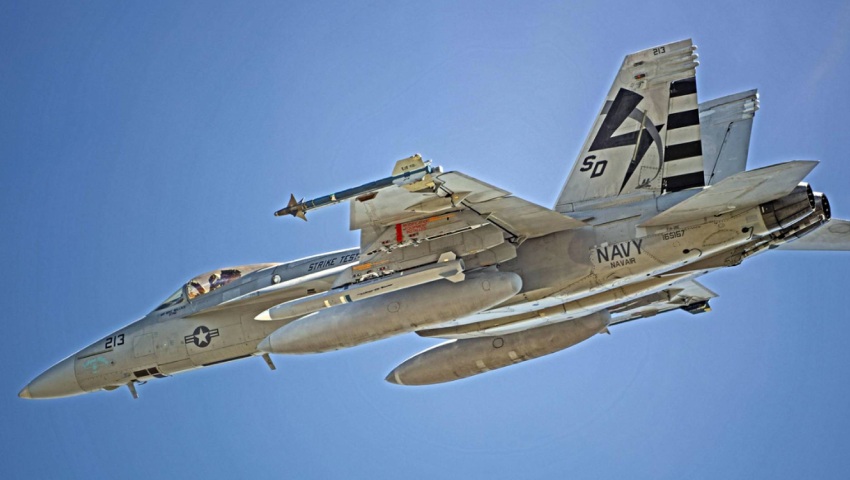A new Northrop Grumman-built weapons system has been fired from a Boeing-built Super Hornet for the first time.
The US Navy has completed the first live fire of Northrop Grumman’s AGM-88G Advanced Anti-Radiation Guided Missile Extended Range (AARGM-ER) from a F/A-18 Super Hornet.
The test, conducted at the Point Mugu Sea Range off the coast of southern California, demonstrated the new missile’s long-range capability.
“The AARGM-ER was successfully launched from the F/A-18 aircraft and met the key test objectives of a first missile live fire event,” Captain A.C. Dutko, Navy Program Manager for Direct Time Sensitive Strike (PMA-242), said.
“The government and industry team had great focus and was able to conduct this test event three months earlier than originally envisioned.”
AARGM-ER leverages AARGM, providing protection and enhancing the capability of US Navy aircrew.
AARGM-ER is set to be integrated on the Boeing-built F/A-18E/F Super Hornet fleet and EA-18G Growler aircraft, while also supporting the US Air Force’s Lockheed Martin-built F-35A, Marine Corps F-35B, and Navy and Marine Corps F-35C aircraft.
“Congratulations to the collective government-industry team for another successful milestone bringing AARGM-ER one step closer to operational fielding,” Gordon Turner, vice president, advanced weapons at Northrop Grumman, said.
This latest announcement comes just days after Northrop Grumman confirmed that its MQ-4C Triton — a high-altitude, long-endurance (HALE) platform, to be used for maritime ISR operations — conducted its maiden flight with “highly upgraded” multi-intelligence configuration, referred to as integrated functional capability four (IFC-4).
The new feature is designed to enhance maritime situational awareness to better inform real-time decision making at tactical to strategic levels.
The bolstered platform is expected to “completely revolutionise” maritime patrol and reconnaissance capability for customers — the US Navy and Royal Australian Air Force.
The US Navy is currently operating two Tritons in the Pacific as part of an early operational capability deployment, with the program expected to achieve initial operational capability in 2023.
The Navy has committed to maintaining five 24/7 operational orbits with a planned 68-aircraft program of record
Meanwhile, Australia is expected to receive the first of six to seven Triton air vehicles in 2023, with Northrop Grumman expected to begin building the airframe later this year.
[Related: Triton takes flight in ‘highly upgraded’ multi-intelligence mode]



